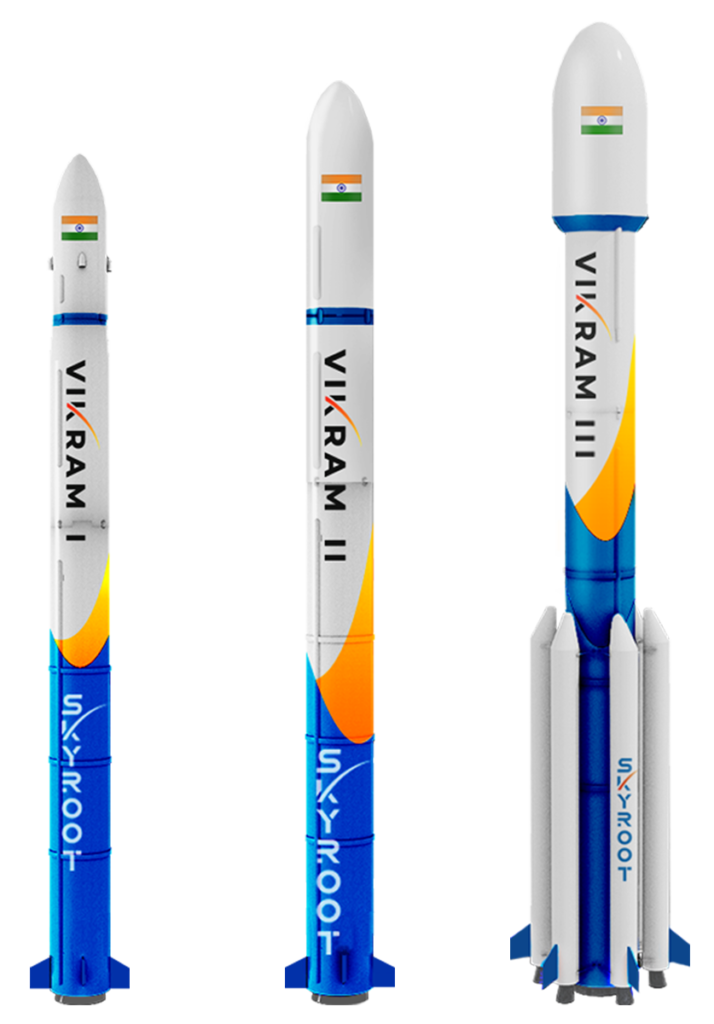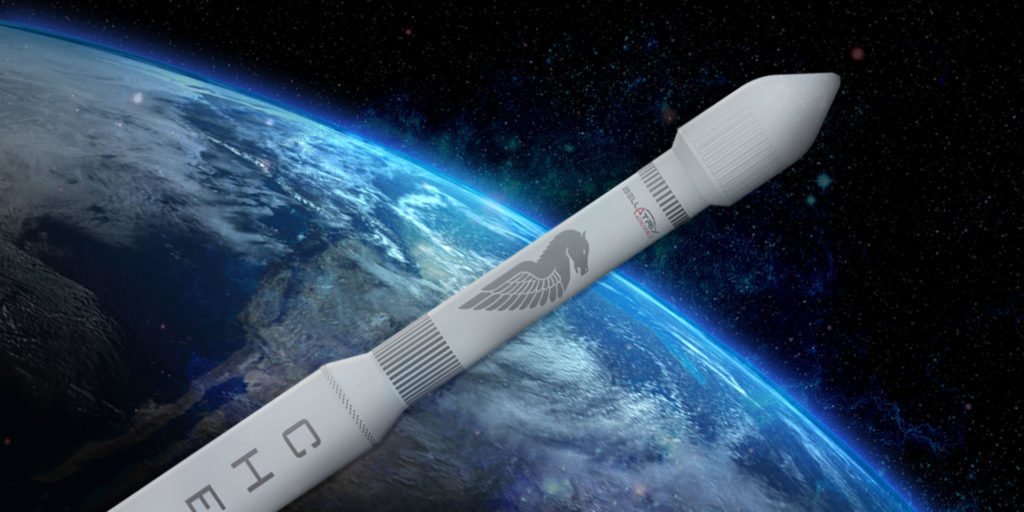The most known and so popular private space company everyone know is SpaceX. We can say Elon Musk got numerous individuals intrigued into space. As India space industry is making its way to privatization. There here are four India’s Private Space companies that are India’s answer to SpaceX. You may not have heard about them unless you’re heavily invested in space study.
Next SpaceX in India
1. Skyroot Aerospace
2.Agnikul Cosmos
3.Bellatrix Aerospace
4.Pixxel
Let’s go through each of these company in details.
Skyroot Aerospace
Skyroot Aerospace is a Hyderabad based startup established in 2018. It was established by previous ISRO researchers Pawan Kumar Chandana and Naga Bharath Daka. The organization is taking a shot at its ‘Vikram’ scope of rockets, and they’re preparing to send satellites into space by mid-2021.
Skyroot is working currently on 3 rocket models.
1.Vikram 1
2.Vikram 2
3.Vikram 3

Vikram 1
Vikram 1 named as a tribute to Dr. Vikram Sarabhai Vikram 1 is a 3 stage rocket its 19m tall and can carry a payload weight of 225kg to 500 km SSPO and 315kg to 45° inclination 500km LEO. The architecture is highly reliable solid propulsion stages with proven design heritage, with modern and miniaturized avionics.
The 1st stage produces 100 tons of thrust meaning around 890KN so if you compare ISRO’s High Thrust Vikas Engine (HTVE) not the normal VIKAS engine it’s even more than that HTVE produces around 846KN.
The orbital adjustment module is done with re-start capability enables multi-orbit insertions. Skyroot claims the rocket can be assembled and launched within 24 hours from any launch site.
Vikram 2
Vikram 2 can carry a payload of 410kg to 500km SSPO and 520kg to 45° inclination 500km LEO. The third stage to this rocket is Advanced Cryogenic Methalox engine replaces third stage of Vikram 1. And also, upper stage of cryo-engine restart with capability that enables multi-orbit insertions.
Vikram 3
Vikram 3 is so much similar to Vikram 2 but this model of rocket has strap on boosters just like PSLV. This rocket can carry a payload of 580kg to 500km SSPO and 720 kg to 45° inclination 500km LEO. The strap on boosters on this model is Solid Rocket Boosters.
This booster is an upgrade to Vikram 2 with additional cost. Even this rocket can be assembled and launched within 72 hours from any launch site. Skyroot Aerospace is working to put payload into orbit with minimal cost for a launch.
As of now there don’t have any launch pad, but they are planning on mobile launcher.
Another exciting news is that Skyroot is working on much bigger rocket that can put much heavier payload to geostationary orbit. As now there is no public news about it.
Agnikul Cosmos
Agnikul Cosmos is a Chennai based startup established by Srinath Ravichandran and Moin SPM. The organization is dealing with a rocket named ‘Agnibaan’, which is a two-arranged rocket with 3D-printed motors. Agnikul needs to be one of the main organizations to offer reasonable in-circle dispatches before expanding to space.
Agnibann
Agnibann can carry a payload up to 100kg to low earth orbit up to 700km with a plug and play configuration. It is a 2 stage LOX/Kerosene vehicle with a third “baby stage” 1st stage produces 140 KN of thrust 2nd Stage uses of vacuum optimized version of the first engine producing 20KN
First mission is to make affordable Earth orbit launches the next mission is to have affordable lunar fly by mission’s rocket height is around 18 meters.
Bellatrix Aerospace
This current one’s an Indian aerospace R&D organization that spends significant time in satellite drive. It’s situated in Coimbatore, Tamil Nadu, and was established by Rohan M Ganapathy and Yashas Karanam.
Bellatrix is taking a shot at a rocket named ‘Chetak’, and it could be the primary rocket with motors that utilization Methan and liquid oxygen. They’re wanting to utilize a ‘Mobile launcher’ to dispatch their rocket, despite the fact that it is not yet clear how it works out.
Chetak
Chetak is 19m tall can carry a payload up to 150kg to 700km Sun Synchronous Orbit. It is designed to take multiple satellites to their dedicated orbits. The Payload fairing is 3m in height and 2m in diameter.
The first stage of Chetak will use four Aeon engines each capable of generating 41kN of thrust, giving a total thrust of 164kN. This stage is designed for multiple restart capability.
The Aeon engine will feature turbo-pumps driven by Brushless DC motors power by advanced batteries. This will eliminate the need for complex turbo-machinery and plumbing. The second stage will use a single Aeon engine. This stage is optimized for vacuum operation at a down rated 21kN thrust. This stage is also designed for multiple restart capability.

Both the stages of Chetak will use Liquid Methane and Liquid Oxygen as its propellants. These are clean burning fuels. Clean burning does not produce carbon compounds (coking), making it easier for reuse.
This propellant combination also provides high specific impulse. Many rocket engines employ helium pressurization system is extremely complex and carries certain risk.
Chetak’s engines are autogenously pressurized, thus simplifying the design and eliminating the risk of explosion. Bellatrix promises minimum wait periods of less than 1 month on Chetak.
Pixxel
Pixxel is the only organization in the rundown that is set for a dispatch in the long stretch of November this year. This organization is wanting to dispatch around 24 ultra-high-goal perception satellites to accumulate information and study agribusiness, environmental change, and so on. It’s an intriguing idea, no doubt.
We’ll clearly have significantly more to discuss once they have the rockets all set. Be that as it may, for the time being, we’re unimaginably pleased with the work they’re placing in.
Source:
This month NASA’s is launching its most ambitious mission Mars 2020 Rover . There are some interesting feature onboard like Sample Collector, Mars helicopter
Additinaol Resources:
